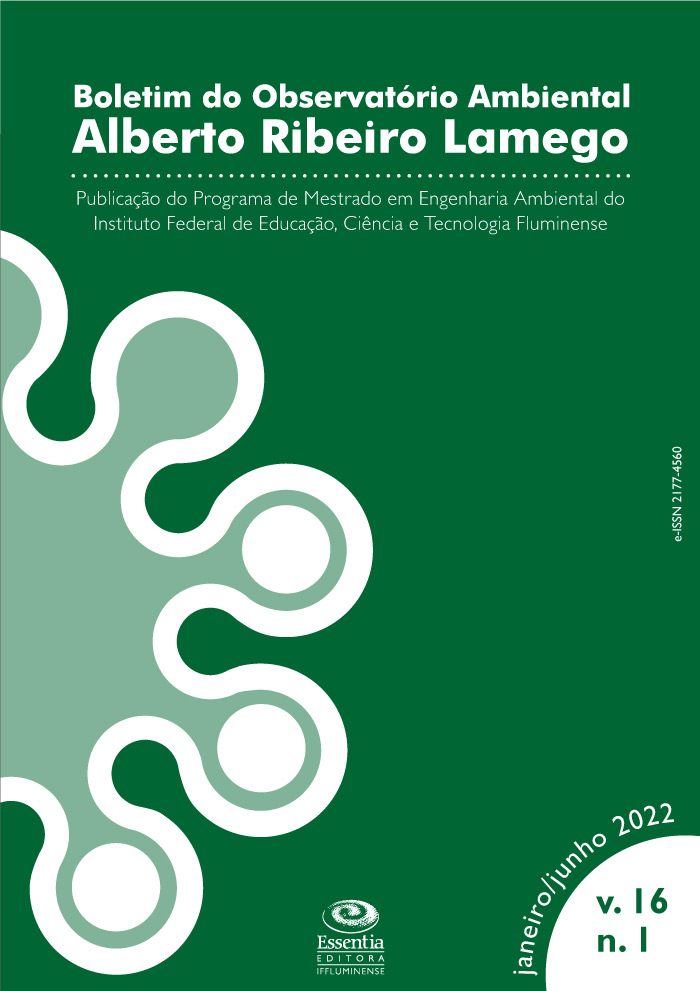Profile analysis of artisanal fishermen in São Francisco do Sul/SC: a focus for environmental education
DOI:
https://doi.org/10.19180/2177-4560.v16n12022p74-88Keywords:
Hydrography, Fisheries, Freshwater, Conservation, Traditional communitiesAbstract
São Francisco do Sul, a small but quite old beach municipality on the northern coast of Santa Catarina estate, have extremely important marine ichthyofauna for the economy and tourism. However, freshwater and estuarine ichthyofauna, in addition to playing an important biological role, are also a source of resources, especially for the traditional communities. To better understand the use and conservation of fishery resources, we conducted a survey with traditional fishing communities. Thus, we seek to gather information about the fishing activity, focusing on artisanal fishing carried out in rivers or lagoon systems. This characterization with fishermen demonstrated that Acaraí river is the mainly fishing spot, when fishing in rivers or lagoons. Most fishermen use the fish for their own consumption or for sale. We also note that a considerable portion of these fishermen do not use, for the desired purposes, all the fish they remove from the water and this may be related to the characteristics of the equipment they use (length and size of the cast nets and gillnets). Finally, with this data, we produced a material in the form of a booklet that can be used as support in environmental education activities.Downloads
References
ARMSTRONG, D.W. et al. Gear selectivity and the conservation of fish. J. Fish. Biol., v. 37A, p. 261-262, 1990.
BENINCA, J. Variação espaço-temporal da ictiofauna da laguna Acaraí e seus afluentes no Parque Estadual Acaraí, São Francisco do Sul, SC, Brasil. 2011. 61 f. Dissertação (Mestrado em Ciências Biológicas), Universidade Federal do Paraná, Curitiba, 2011.
GERHARDINGER, L. C. et al. Conhecimento ecológico local de pescadores da Baía Babitonga, Santa Catarina, In: Brasil: Peixes da família Serranidae e alterações no ambiente marinho. Acta Scientiarum - Biological Sciences, v. 28, n. 3, p. 253–261, 2006.
HANSEN, M. J. et al. Gillnet selectivity for lake trout (Salvelinus namaycush) in Lake Superior. Canadian Journal of Fisheries and Aquatic Sciences, v. 54, p. 2483–2490, 1997.
JACOBI, P. Educação Ambiental, Cidadania e Sustentabilidade. Cadernos de Pesquisa, São Paulo, 2003.
MADENJIAN, C. P.; RYAN, P. A. Effect of gear selectivity on recommended allowable harvest with application to the Lake Erie yellow perch fishery. N. Am. J. Fish. In: Manage., v. 15, p. 79–83, 1995.
MENEZES, N. A. Guia Prático para Conhecimento e Identificação das Tainhas e Paratis (Pisces, Mugilidae) do Litoral Brasileiro. In: Revista Brasileira de Zoologia, v. 2, n. 1, p. 1–12, 1983.
OLIVEIRA, F. A. de; VIEIRA, C. V. Aspectos Climáticos e Hidrográficos. In: MELO-JÚNIOR, J. C. F. de; BOEGER, M. R. T. (orgs). Patrimônio natural, cultura e biodiversidade da restinga do Parque Estadual Acaraí. Joinville, SC: Editora Univille, 2017. p. 113-136.
PAZ, J. P. S.; VIEIRA, C. V. Evolução do Uso e Cobertura do Solo no Município de São Francisco do Sul – Estado de Santa Catarina. In: Boletim Paranaense de Geociências, v. 74, n. 1, p. 28–36, 2018.
PINHEIRO, P. et al. Comunidades de Peixes de Água Doce e Estuarinos. In: MELO-JÚNIOR, J. C. F. de; BOEGER, M. R. T. (orgs). Patrimônio natural, cultura e biodiversidade da restinga do Parque Estadual Acaraí. Joinville, SC: Editora Univille, 2017. p. 334-353.
SCHORK, G; MOTTOLA, L. S. M.; HOSTIM-SILVA, M. Diagnóstico da pesca amadora embarcada na região de São Francisco do Sul (SC). In: Revista CEPSUL - Biodiversidade e Conservação Marinha, v. 1, n. 1, p. 8–17, 2010. Disponível em: <http://www.icmbio.gov.br/revistaeletronica/index.php/cepsul/article/view/295>.
SEVERINO, A. J. Metodologia do Trabalho Científico. 23ª ed. São Paulo: Cortez. 2007. 304 p.
SILVA, J. A. da. et al. Educação ambiental e comunidades tradicionais da APA delta do Parnaíba. In: Moreira, Francisca Mayara Pereira, et al. (Orgs.) Educação ambiental em unidades de conservação e políticas públicas. Mossoró, RN: EDUERN, 2017.
VIEIRA, F. P.; SOUZA, L. B. A Educação Ambiental com as Comunidades Tradicionais: Outras Trajetórias de Sustentabilidades. In: Notandum, v. XXI, n. 47, 2018.
VIEIRA, F. S. et al. Avaliação do ensino de educação ambiental a partir da percepção dos professores do município de Aracaju, Sergipe. In: Scientia Plena, v. 5, n. 8, p. 1–6, 2009.
Downloads
Published
Issue
Section
License
Copyright (c) 2022 Daniel Meneguello Limeira, Jéssica Cristine de Mira, Leandro Rafael Pinto

This work is licensed under a Creative Commons Attribution 4.0 International License.
The authors of the manuscript submitted to Boletim do Observatório Ambiental Alberto Ribeiro Lamego, hereby represented by the corresponding author, agree to the following terms:
The authors retain the copyright and grant Boletim do Observatório Ambiental Alberto Ribeiro Lamego the right of first publication.
At the same time the work is licensed under the Creative Commons Attribution 4.0 International License, allowing third parties to copy and redistribute the material in any medium or format and to remix, transform, and build upon its content for any legal purpose, even commercially, provided the original work is properly cited.
Authors will not receive any material reward for the manuscript and Essentia Editora will make it available online in Open Access mode, through its own system or other databases.
Authors are authorized to enter into additional contracts separately for non-exclusive distribution of the version of the work published in Boletim do Observatório Ambiental Alberto Ribeiro Lamego (eg, publish in institutional repository or as book chapter), with acknowledgment of authorship and initial publication in this journal.
Authors are permitted and encouraged to publish and distribute their work online (eg, in institutional repositories or on their personal page) at any point after the first publication of the article by Boletim do Observatório Ambiental Alberto Ribeiro Lamego.
Essentia Editora may make normative, orthographic and grammatical changes in the originals in order to maintain the standard language, with the final consent of the authors.
The content and opinions expressed in the manuscript are the sole responsibility of the author (s).










1.png)





